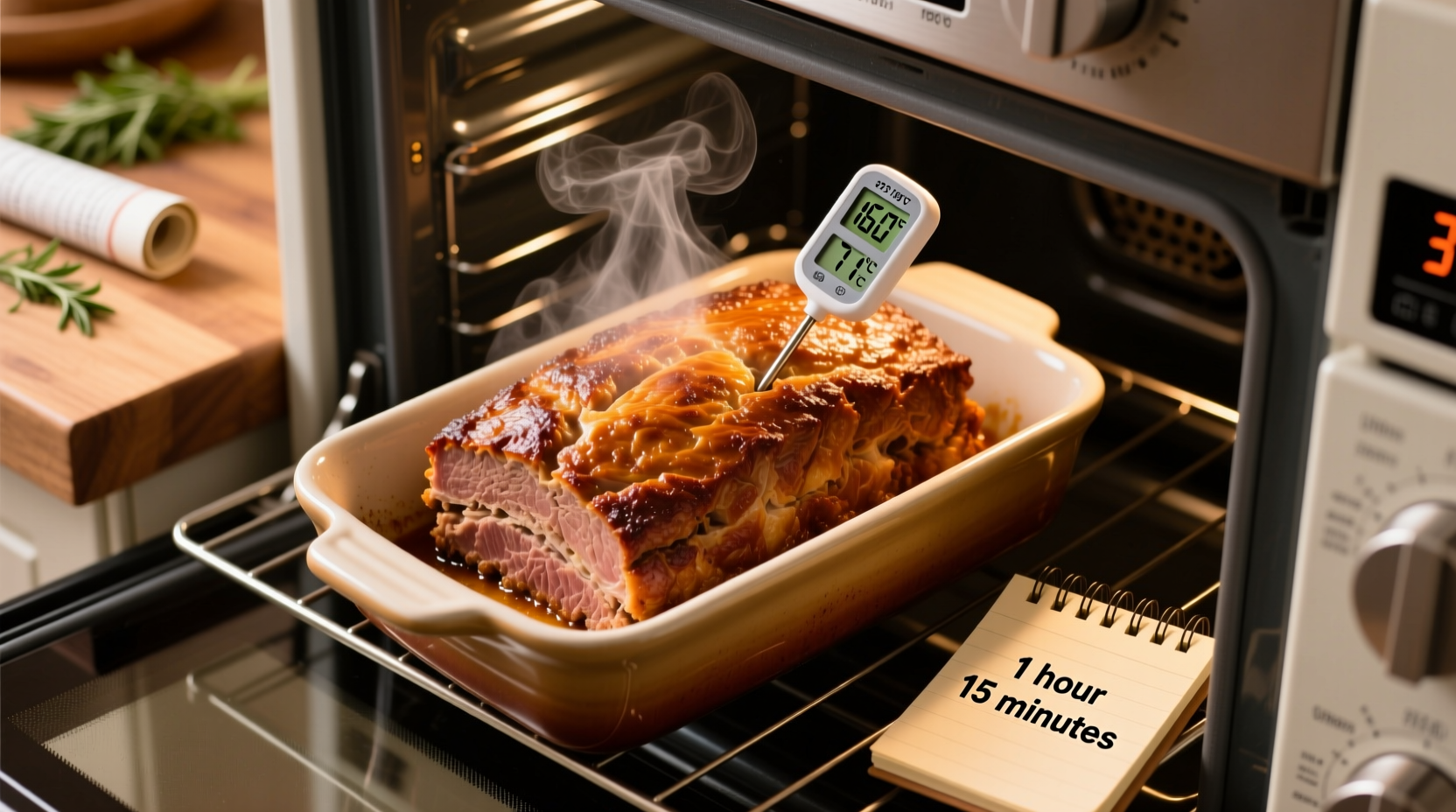Nothing ruins a comforting meatloaf dinner faster than dry, crumbly texture or unsafe undercooked meat. Getting the temperature right transforms this classic dish from mediocre to magnificent while keeping your family safe. Let's explore exactly how to nail meatloaf temperature every time.
Why 160°F Is the Meatloaf Sweet Spot
Ground meats like those used in meatloaf require higher temperatures than whole cuts because the grinding process distributes potential bacteria throughout the meat. The USDA's Food Safety and Inspection Service confirms that 160°F is the minimum safe internal temperature for beef, pork, veal, and lamb mixtures. At this temperature, harmful pathogens like E. coli and Salmonella are eliminated.
Professional chefs like those at the Culinary Institute of America emphasize that while 160°F is the safety threshold, pulling meatloaf at 155-158°F and allowing 5-10 minutes of resting time achieves the same safety through carryover cooking while preserving juiciness. This approach prevents the overcooked, dry texture that plagues so many home cooks' meatloaf attempts.
| Meat Type | USDA Minimum Safe Temp | Recommended Target Temp | Resting Time |
|---|---|---|---|
| Beef/Pork/Veal Mix | 160°F (71°C) | 155-158°F (68-70°C) | 5-10 minutes |
| Poultry-Based | 165°F (74°C) | 160-162°F (71-72°C) | 10-15 minutes |
| Game Meats | 160°F (71°C) | 150-155°F (66-68°C) | 10-15 minutes |
How Meatloaf Temperature Has Evolved
Food safety guidelines aren't static. The USDA's temperature recommendations have evolved based on improved scientific understanding:
- Pre-1980s: Many cookbooks recommended cooking ground meats to 170°F, resulting in notoriously dry meatloaf
- 1985: USDA established 160°F as the safe minimum for ground meats based on new pathogen research
- 2011: FDA Food Code officially adopted 155°F for ground meats held for 15 seconds (primarily for commercial kitchens)
- Present: USDA maintains 160°F as the consumer guideline while culinary professionals recommend 155-158°F with proper resting
Measuring Temperature Like a Pro
Where and how you check temperature matters as much as the number itself:
- Use the right thermometer: Digital instant-read thermometers (like ThermoWorks models tested by America's Test Kitchen) provide the most accurate readings for home cooks
- Check multiple spots: Insert the thermometer into the center of the loaf and near the edges, as ovens often cook unevenly
- Avoid contact with pan: Ensure the probe isn't touching the baking dish, which can give false high readings
- Verify final temperature: Check again after resting, as carryover cooking may raise temperature 5-10 degrees

Factors That Affect Your Meatloaf's Cooking Time
While temperature is the true indicator of doneness, understanding these variables helps prevent mistakes:
- Loaf size and shape: A standard 2-pound loaf in a 9x5 inch loaf pan typically needs 45-60 minutes, while free-form loaves cook faster
- Oven accuracy: Most home ovens vary by 25°F - use an oven thermometer for precision
- Meat composition: Higher fat content slows temperature rise but improves moisture retention
- Starting temperature: Cold ingredients extend cooking time by 10-15 minutes compared to room-temperature mixtures
When to Adjust the Standard Temperature
While 160°F works for most meatloaf recipes, certain situations require adjustments:
- Poultry-based meatloaf: Must reach 165°F minimum due to salmonella risks in ground poultry
- Meatloaf with added moisture: Recipes with significant liquid ingredients (like soups or sauces) may need 5°F higher target
- High-altitude cooking: Above 3,000 feet, increase target temperature by 5-10°F as water boils at lower temperatures
- Leftover reheating: Previously cooked meatloaf should reach 165°F when reheated
Troubleshooting Temperature Problems
Common meatloaf temperature issues and solutions:
- Dry texture despite hitting 160°F: You likely pulled it immediately at 160°F - let it rest 10 minutes for juices to redistribute
- Raw center but browned exterior: Cover loosely with foil and continue cooking, checking every 5 minutes
- Temperature stalled at 150°F: This is normal - the evaporative cooling effect during cooking causes a plateau that breaks once moisture evaporates
- Overcooked edges but undercooked center: Next time try a water bath or lower oven temperature (325°F instead of 350°F)
Final Temperature Tips for Perfect Meatloaf
Professional kitchens follow these additional practices that home cooks can adopt:
- Insert thermometer horizontally through the side for most accurate center reading
- Calibrate your thermometer annually using ice water (32°F) or boiling water (212°F)
- For convection ovens, reduce target temperature by 25°F as air circulation speeds cooking
- Let meatloaf rest covered with foil - this continues the cooking process while retaining moisture











 浙公网安备
33010002000092号
浙公网安备
33010002000092号 浙B2-20120091-4
浙B2-20120091-4